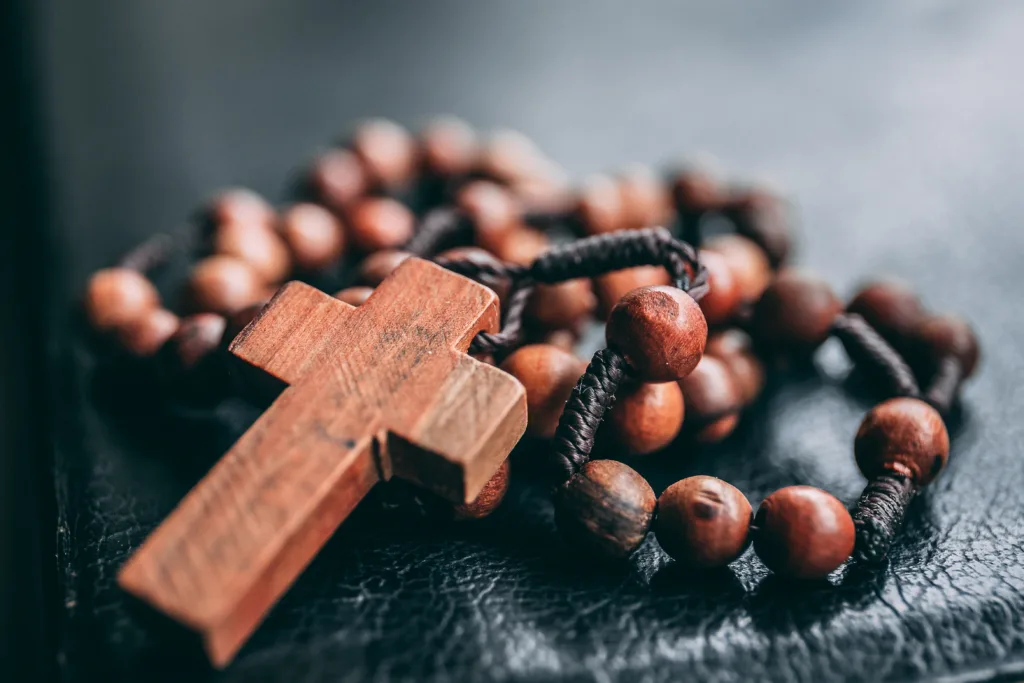Catholicism is one of the oldest and largest religions in the world, with over one billion followers. However, not all Catholics practice their faith in the same way. There are three main types of Catholics: Nominal Catholics, Cafeteria Catholics, and Practicing Catholics.
Nominal Catholics are those who identify as Catholic but do not practice their faith regularly. They may attend church on occasion, but they do not participate in the sacraments or follow the teachings of the Church. They may also hold beliefs that are not in line with Catholic doctrine. Nominal Catholics may still consider themselves part of the Catholic community and may seek out the Church for important life events such as weddings and funerals.
Cafeteria Catholics, on the other hand, are those who pick and choose which aspects of Catholicism they want to follow. They may attend Mass regularly, but they may also disagree with certain teachings of the Church and choose to ignore them. For example, a Cafeteria Catholic may support contraception or same-sex marriage, even though these are not in line with Catholic doctrine. Cafeteria Catholics may still consider themselves faithful Catholics, but their beliefs and practices may be at odds with official Church teachings.
Practicing Catholics are those who fully embrace Catholicism and follow its teachings and practices. They attend Mass regularly, participate in the sacraments, and follow the Church’s teachings on moral and ethical issues. Practicing Catholics may also be involved in their local parish, volunteering their time and resources to support the Church and its mission. For many Practicing Catholics, their faith is a central part of their identity and shapes their worldview and values.
It is important to note that these categories are not mutually exclusive, and there may be some overlap between them. For example, a person may be a Nominal Catholic who occasionally attends Mass or a Cafeteria Catholic who still follows some aspects of Church doctrine. Additionally, these categories are not meant to judge or categorize individuals but rather to provide a framework for understanding the diversity of Catholic practice and belief.
The Catholic Church is a diverse community, with followers who practice their faith in different ways. While there are three main types of Catholics – Nominal, Cafeteria, and Practicing – these categories are not set in stone and there may be overlap between them. Ultimately, the most important thig is for individuals to seek out their own spiritual path and to find meaning and fulfillment in their faith.
What Are The 3 Types Of Catholic?
The Catholic community can be classified into three types based on how they practice their faith. The first type is Nominal Catholics, who identify themselves as Catholics but do not practice their faith regularly. They may attend mass on special occasions like weddings, funerals, or Christmas but do not participate in regular religious activities.
The second type is Cafeteria Catholics, who choose to practice only some aspects of their faith while ignoring others. They may pick and choose which doctrines and practices to follow based on their personal preferences and beliefs.
The third type is Practicing Catholics, who actively participate in their faith by attending mass regularly, observing religious practices, and following the teachings of the Catholic Church. They also engage in volunteer work, charity, and other activities that promote the values of their faith.
It is essential to note that these classifications are not definitive, and there can be variations within each group. Some people may move from one group to another at diffeent stages of their lives, based on their experiences and beliefs.

What Are The 5 Major Catholic Beliefs?
The Catholic Church has several core beliefs that are considered fundamental to its faith. Here are the five major Catholic beliefs:
1. God’s existence: Catholics believe in the existence of one God who created the universe and everything in it.
2. The Holy Trinity: This refers to the doctrine that God is thee persons in one: the Father, the Son (Jesus Christ), and the Holy Spirit.
3. The divinity of Jesus: Catholics believe that Jesus is both fully human and fully divine, and that he is the son of God.
4. Salvation through faith and good works: Catholics believe that salvation is a gift from God that is received through faith in Jesus Christ and through good works.
5. The sacraments: Catholics believe in the importance of the seven sacraments, which are considered visible signs of God’s grace. These sacraments include baptism, confirmation, the Eucharist, confession, anointing of the sick, holy orders, and marriage.
Can You Be Catholic But Not Roman Catholic?
It is possible to be Catholic but not Roman Catholic. There are several other Catholic traditions that exist alongside Roman Catholicism, including Eastern Catholic Churches such as the Coptic and Melkite churches. These churches are in communion with Rome but have their own distinct liturgical and cultural traditions. Additionally, there are other big Catholic traditions, such as Orthodoxy and Anglicanism, that also have their own unique beliefs and practices. It is important to note that while these traditions share certain similarities with Roman Catholicism, they also have significant differences in terms of theology, governance, and liturgical practices.
Conclusion
The Catholic faith is a diverse and complex religion that is practiced differently by its followers. While some Catholics may simply identify as such withut actively practicing their faith, others may pick and choose which teachings to follow, leading to a more individualized approach. However, there are also devout Catholics who strictly adhere to the teachings of the Church and actively participate in its sacraments and rituals. It is important to recognize and respect the different ways in which Catholics practice their faith, as it is a personal and meaningful aspect of their lives. the Catholic faith is a rich and diverse tradition that continues to evolve and adapt to the changing times and needs of its followers.
